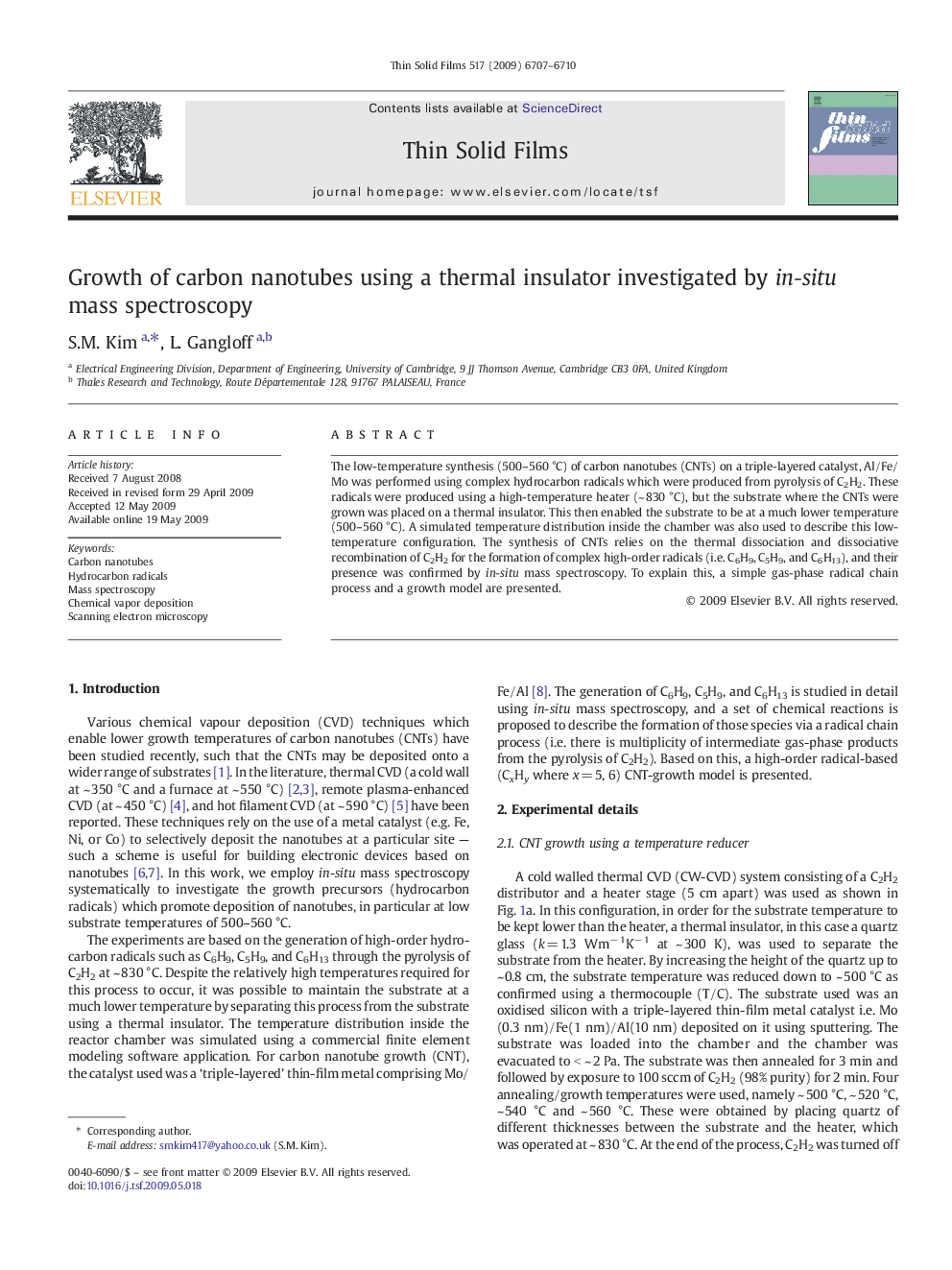| Article ID | Journal | Published Year | Pages | File Type |
|---|---|---|---|---|
| 1672506 | Thin Solid Films | 2009 | 4 Pages |
The low-temperature synthesis (500–560 °C) of carbon nanotubes (CNTs) on a triple-layered catalyst, Al/Fe/Mo was performed using complex hydrocarbon radicals which were produced from pyrolysis of C2H2. These radicals were produced using a high-temperature heater (~ 830 °C), but the substrate where the CNTs were grown was placed on a thermal insulator. This then enabled the substrate to be at a much lower temperature (500–560 °C). A simulated temperature distribution inside the chamber was also used to describe this low-temperature configuration. The synthesis of CNTs relies on the thermal dissociation and dissociative recombination of C2H2 for the formation of complex high-order radicals (i.e. C6H9, C5H9, and C6H13), and their presence was confirmed by in-situ mass spectroscopy. To explain this, a simple gas-phase radical chain process and a growth model are presented.
